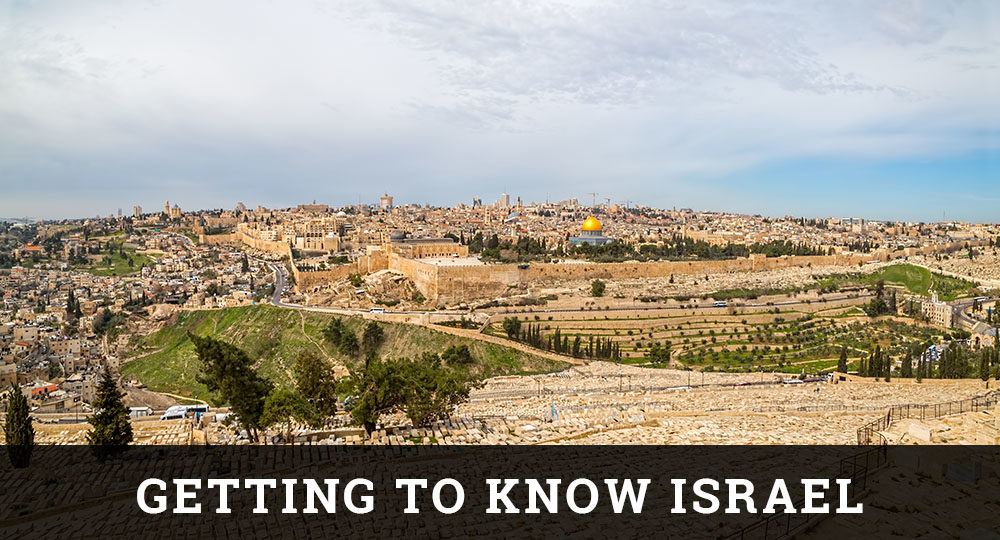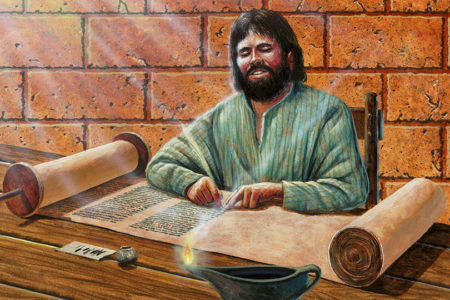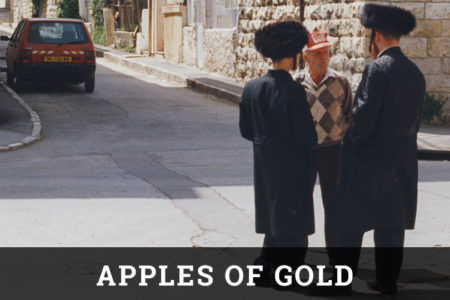Approaches to Jerusalem Part Two
A barren ruggedness marks the eastern side of the Judean Hill Country. Virtually year-round the face of these slopes is covered with only sand, stones, and deep gorges cut by the severe erosion of the wadis as they quickly release the winter rains from the hill country into the Jordan Valley. Water sources are few and not very plentiful. There are occasional crisscross paths, made over the centuries by animals moving from one scarce pasture area to another, but most of the slopes fall in extremes of up to hundreds of feet. (The elevation from Jerusalem to Jericho, for example, falls from 2,700 feet above sea level to 1,100 feet below sea level, a difference of nearly 4,000 feet.) The ground is loose and treacherous, the rocks sharp and plentiful. It is a very uninviting terrain. Nonetheless, when the children of Israel prepared to conquer and settle the land of Canaan, this was the first impression they received of their new home. If this was the land of milk and honey, there wasn’t much evidence of it.
As important as the western approaches to Jerusalem are (see the August/September 1992 issue of Israel My Glory), the eastern approaches are just as significant and biblically colorful. In fact, all first-time visits to the land of Israel by those considered to be patriarchs (and their descendants) were made from the east. Abraham and Sarah, Jacob (on his return from his lengthy stay with his uncle Laban), Joshua and the children of Israel, and even a prophet or two (Elijah was born in Tishbe of Gilead) entered the land from the east.
But once inside the land, how do you get to Jerusalem from this barren area? There are three eastern approaches to Jerusalem, and they all go up. As mentioned earlier, the Jordan Valley, especially in this area, is below sea level and serves as the “launching pad” for any expedition desiring to mount the various ascents that lead to Jerusalem. From north to south, the three main approaches are (1) Jericho-Bethel/Ai-Jerusalem, (2) Jericho (old Roman Road)/Jerusalem, and (3) En Gedi-Tekoa/Bethlehem-Jerusalem. Each of these routes is rugged and barren and lacks a good water supply. The traveler should, therefore, begin the trip prepared with an adequate water supply.
Each route has been the scene of some interesting biblical history. Along the Jericho-Bethel/Ai route, Joshua’s troops engaged the enemies of the Gibeonites. It was because of their failure to consult the Lord that they had to fight the battle (Josh. 9–10); nonetheless, God graciously enabled them to emerge victorious. This battle is significant because it was on that day that “the sun stood still” (Josh. 10:13). It is also significant because the eastern approach taken by Joshua connects with a western approach, Beth-horon (Josh. 10:10). Even more amazing were the logistics and physical capabilities Joshua’s men exhibited. The text relates that they traveled “all night” (uphill, remember), fought an extended day’s battle, and then routed the enemy to the other side of the hill country—and all of this without jeeps, tanks, or even horses!
The second route, the Jericho (old Roman) Road, was the setting for at least two New Testament incidents. In all probability it was this approach that Joseph and a very pregnant Mary took to get to Bethlehem in preparation for the birth of Jesus (Lk. 2). They would have avoided Samaria, coming from Nazareth, thus traveling the Jordan Valley until they reached Jericho. And, Christmas carols and cards notwithstanding, the Scriptures do not say that Mary rode a donkey, so she may have made that long, arduous journey on foot. Second, it was probably this same road that Jesus took from Jericho to Jerusalem on His final eastern approach to Jerusalem before His arrest, crucifixion, and resurrection (Lk. 9; 19). This route is also the probable setting for Jesus’ parable about the gracious Samaritan (Lk. 10:30–37).
The third route does not immediately give access to Jerusalem; however, it was well known and used, especially during Old Testament times. Water is scarce along all of these routes, but it is particularly so for this third one, which starts along the Dead Sea near En Gedi, the only major freshwater supply in the region. It then ascends the treacherous mountains of southern Judea until it comes to Tekoa, the hometown of Amos. From there it turns north to Bethlehem, before finally reaching Jerusalem. David, perhaps more than any other Old Testament character, was familiar with this route. His exploits, refuge from Saul, and guerrilla warfare took place on and along this route (1 Sam. 23 provides one example).
When we consider the ruggedness of this terrain and the difficulty in traveling through it, we must marvel at the physical dexterity of the biblical characters who knew and traveled these routes. We also gain a better appreciation of Isaiah’s clear description of the wilderness area in general, and especially that of Wadi Qilt, which hugs the Roman Road, the middle of these three routes. Against this physical background, Isaiah cried out these prophetic words:
The voice of him that crieth in the wilderness, Prepare ye the way of the Lᴏʀᴅ, make straight in the desert a highway for our God. Every valley shall be exalted, and every mountain and hill shall be made low; and the crooked shall be made straight, and the rough places plain; and the glory of the Lᴏʀᴅ shall be revealed, and all flesh shall see it together; for the mouth of the Lᴏʀᴅ hath spoken it (Isa. 40:3–5).







